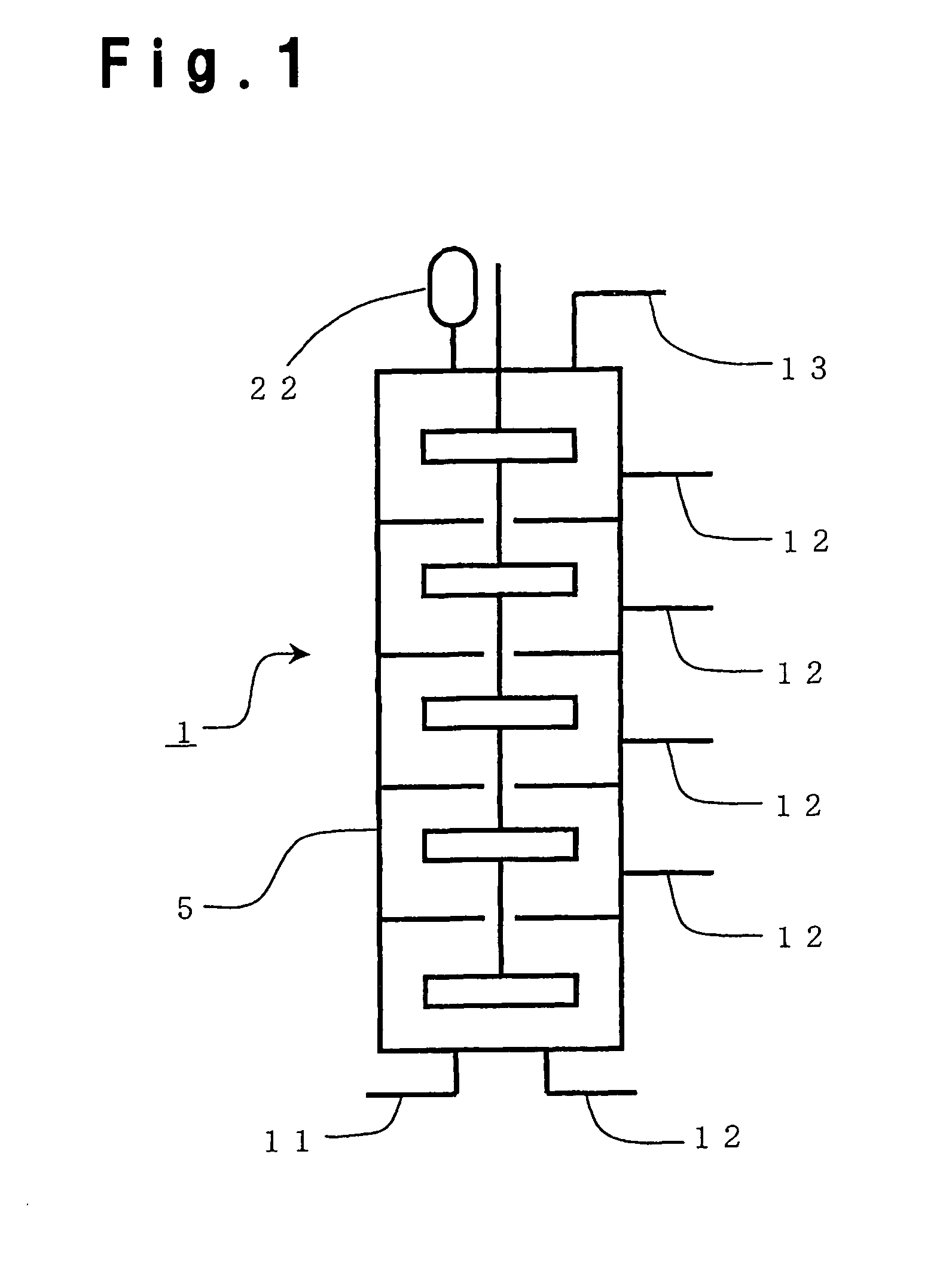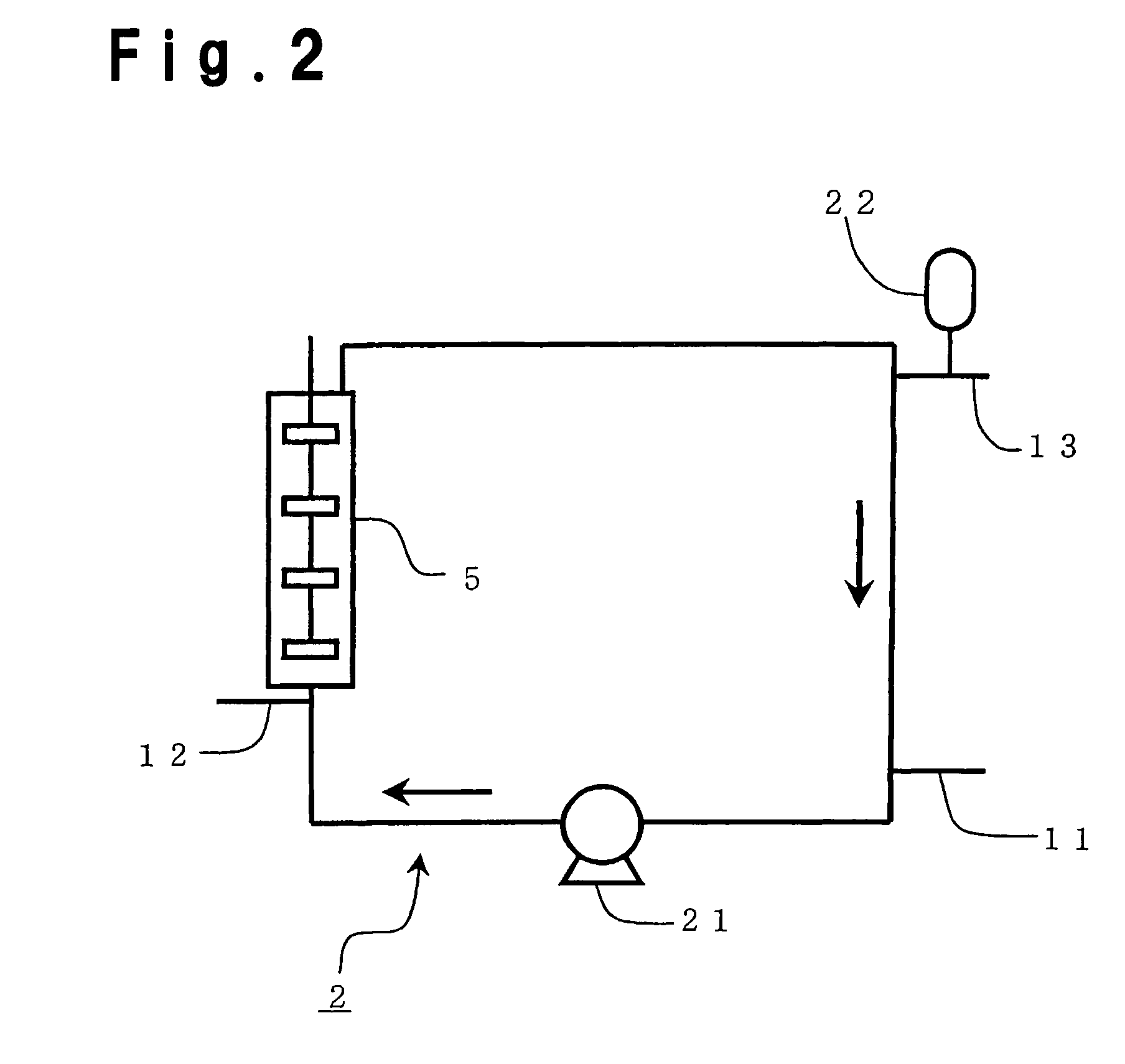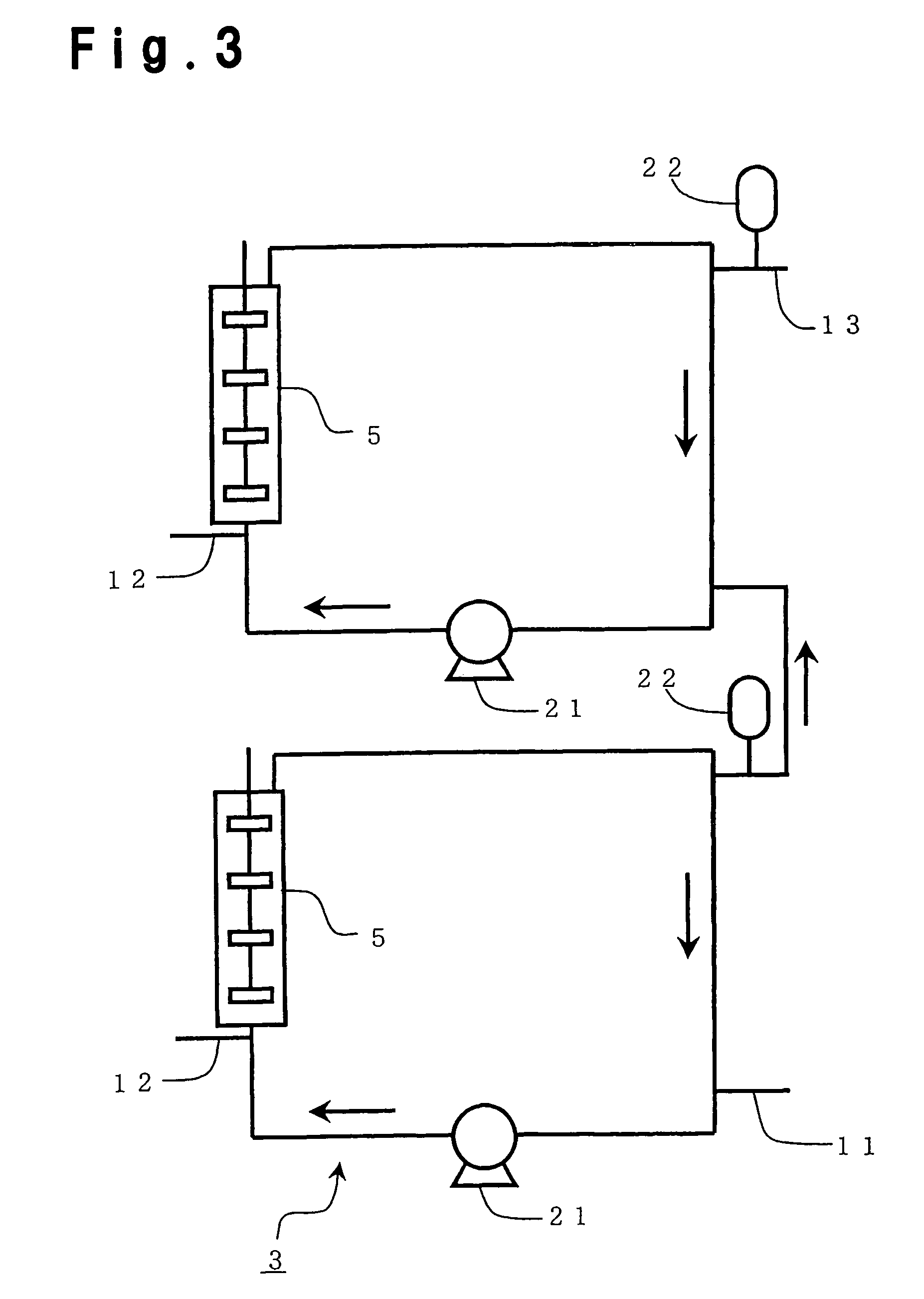Method for continuously producing a polyether
a polyether and continuous production technology, applied in the field of continuous production of polyethers, can solve the problems of long production time, poor volume efficiency of the reaction vessel, and high production cost, and production equipment tends to be large-scal
- Summary
- Abstract
- Description
- Claims
- Application Information
AI Technical Summary
Benefits of technology
Problems solved by technology
Method used
Image
Examples
example 1
[0059]Into 15 cm3 of an aqueous solution containing 10 g of zinc chloride, 80 cm3 of an aqueous solution containing 4 g of potassium hexacyanocobaltate (K3Co(CN)6) was dropwise added over a period of 30 minutes while keeping the temperature at 40° C. After completion of the dropwise addition, a mixture comprising 80 cm3 of a mixed liquid of ethylene glycol mono-tert-butyl ether and tert-butyl alcohol (containing 80 mass % of tert-butyl alcohol, hereinafter referred to as TBA mixed liquid) and 80 cm3 of water was added, and the temperature was raised to 60° C. After stirring for 1 hour, a filtration operation was carried out to obtain a cake containing a double metal cyanide complex.
[0060]Then, a mixture comprising 40 cm3 of the TBA mixed liquid and 80 cm3 of water was added to the cake containing a double metal cyanide complex, followed by stirring for 30 minutes, and then filtration was carried out. To the cake containing a double metal cyanide complex thus obtained, a mixture comp...
example 2
[0061]As a continuous reactor, a multistage stirring and mixing vessel made of stainless steel as shown in FIG. 1 was employed. The entire reactor was divided into 10 reaction zones by means of partition walls so that the respective zones had substantially the same volume, and the volume of each reaction zone was about 100 cm3. The outer appearance of the reactor is substantially cylindrical (inner diameter: 6.5 cm), the reactor is disposed so that the entire reactor is vertical, and one double-paddle blade (blade diameter: 5 cm) which shares the shaft at the center is disposed in each reaction zone. The stirrer speed was 900 revolutions / min. The initiator 1 was supplied from the bottom of the reactor, and the reaction liquid was discharged from the top of the reactor. The initiator supply amount was 2 g / min, and the DMC catalyst A was preliminarily dispersed in the initiator 1 in a concentration of 0.05 mass % and supplied together.
[0062]Propylene oxide as the alkylene oxide was su...
example 3
[0063]Employing the same reactor as in Example 2, the reaction was carried out under the same conditions as in Example 2 except that the stirrer speed was 300 revolutions / min. At this time, no vapor phase part was confirmed at the upper part of the stirring and mixing vessel. Further, the discharged reaction liquid contained substantially no unreacted remaining propylene oxide. Of the obtained polyether (polyoxypropylenetriol), the hydroxyl value was 34.0 mgKOH / g, the molecular weight distribution was 1.16, the total degree of unsaturation was 0.006 meq / g, the viscosity at 25° C. was 1100 mPa·s, and the viscosity at the reaction temperature was 10.0 mPa·s.
PUM
| Property | Measurement | Unit |
|---|---|---|
| Reynolds number | aaaaa | aaaaa |
| Reynolds number | aaaaa | aaaaa |
| Reynolds number | aaaaa | aaaaa |
Abstract
Description
Claims
Application Information
 Login to View More
Login to View More - R&D
- Intellectual Property
- Life Sciences
- Materials
- Tech Scout
- Unparalleled Data Quality
- Higher Quality Content
- 60% Fewer Hallucinations
Browse by: Latest US Patents, China's latest patents, Technical Efficacy Thesaurus, Application Domain, Technology Topic, Popular Technical Reports.
© 2025 PatSnap. All rights reserved.Legal|Privacy policy|Modern Slavery Act Transparency Statement|Sitemap|About US| Contact US: help@patsnap.com



